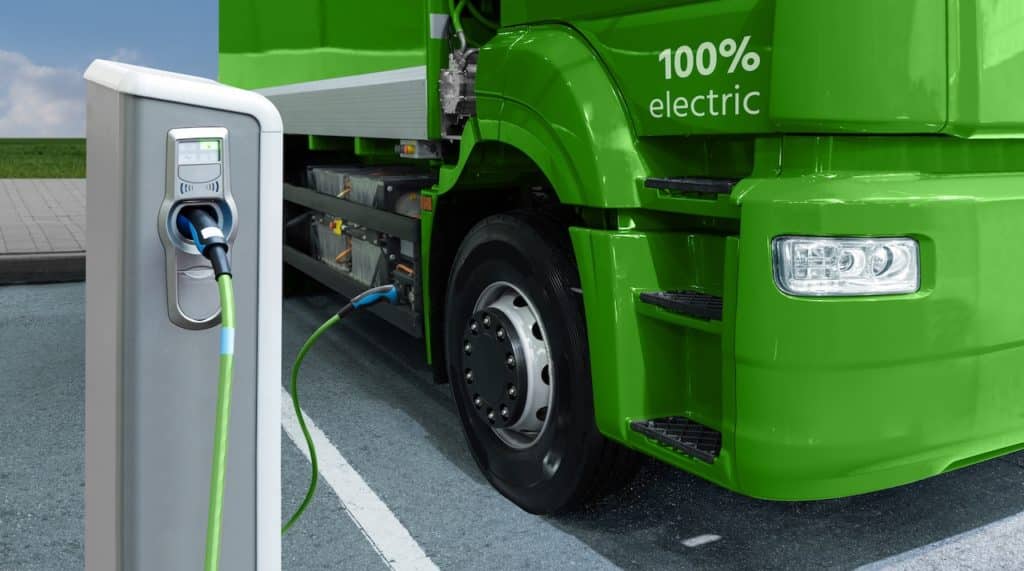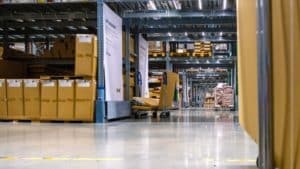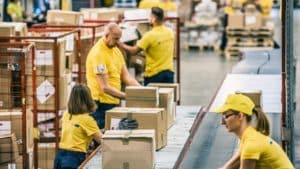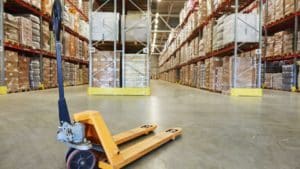For modern businesses, adopting sustainable and responsible practices that protect the environment is paramount. As Dr Seuss said: "We don't inherit the earth from our ancestors, we borrow it from our children". Green logistics is an important solution for achieving these goals, as it aims to reduce the negative environmental impacts of logistics-related activities and improve their overall performance in terms of efficiency and costs. This article will explore possible solutions for environmentally conscious companies looking to adopt efficient green logistics.
The adoption of green logistics solutions is a major trend in the environmentally conscious business sector. In this article, we'll look at the main environmental issues related to logistics and the different solutions available for adopting eco-responsible management. We will also discuss the economic benefits that green logistics can bring, as well as examples of companies that have implemented these solutions. Finally, we'll take a brief look at the limits encountered by a number of companies in adopting green solutions quickly and effectively.
The main environmental challenges facing logistics
The main challenges related to the environmental impact of logistics are mainly linked to CO2 emissions and other greenhouse gases, as well as the management of waste generated by the process. These changes can have a significant effect on local biodiversity, and companies are aware of their responsibility to preserve the limited resources available on our planet.
Emissions of CO2 and other greenhouse gases
According to the Global Logistics Emissions Council's 2020 report, annual greenhouse gas emissions from logistics-related activities accounted for over 7% of total global emissions in 2018. This is absolutely enormous, and a significant proportion of the waste generated by the logistics sector comes from the packaging and transportation of goods. There is also an indirect impact on the environment through the landscape or soil quality, which are altered by the intensive use of the road or rail network.
Waste management
Logistics is crucial to economic activity, but it can also have a negative impact on the environment. Waste management is one of the major challenges of logistics, as companies often generate a significant amount of waste which then needs to be treated. For example, a food production company generates organic waste that needs to be treated to avoid odor and environmental problems.
Impact on biodiversity
The impact of logistics on biodiversity is also a major concern. Logistics activities can cause disruption to local ecosystems, notably by modifying natural habitats and disrupting the life cycles of animal and plant species. The construction of a new road can result in the destruction of a natural habitat for the animals and plants that live there, and this is just one example of the risks to the planet.
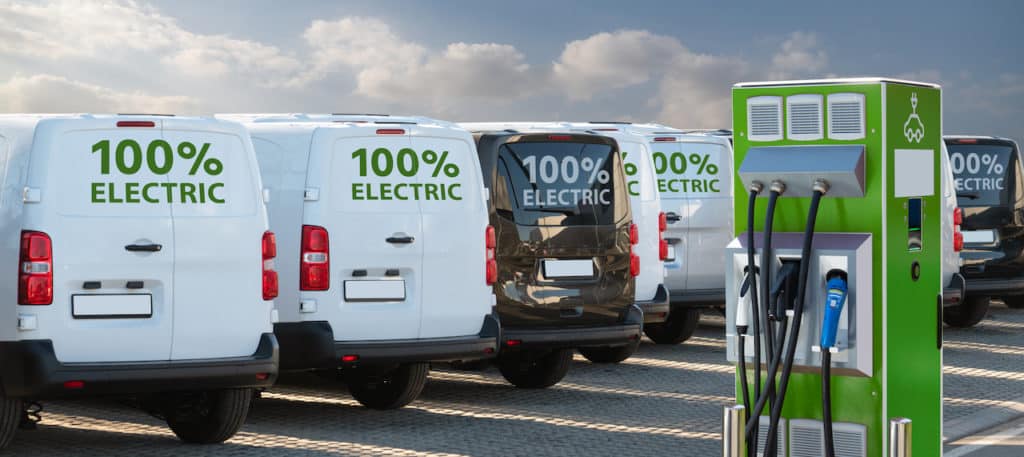
Solutions to minimize these environmental challenges
Fortunately, there are a number of ways to minimize these environmental challenges. These solutions can include reducing the services offered to customers (for example, opt for a packaging policy with just what is needed), using advanced technology such as intelligent routing to reduce costs and avoid unnecessary and inefficient movements) and using clean, plant-based alternatives as packaging materials).
Choosing the most environmentally-friendly modes of transport
Choosing the most environmentally-friendly modes of transport is a key issue for green logistics. Rail and river transport are advantageous modes of transport because they emit fewer greenhouse gases than road or air transport. According to the French Environment and Energy Management Agency (ADEME), rail transport can reduce CO2 emissions by 85% compared to road transport for freight.
However, despite being one of the least CO2-emitting modes of transport, shipping has its limits and constraints. It generates emissions of sulfur, fine particles and nitrogen oxide that pollute the air and water. It is therefore necessary to implement measures to limit the environmental impact of maritime transport.
Optimizing delivery routes
Optimizing delivery routes is another way of reducing the carbon footprint of logistics. By reducing distances travelled and pooling deliveries, companies can cut greenhouse gas emissions linked to the transport of goods. The French Environment and Energy Management Agency (ADEME) suggests that pooling deliveries can reduce CO2 emissions by 10-20%. This is far from negligible!
Eco-designed packaging choices
The choice of eco-designed, recyclable and biodegradable packaging reduces waste and limits the environmental impact of products. This is a fast-growing field, with new products appearing on a regular basis. However, depending on your merchandise, be sure to carefully study the packaging on offer, particularly in terms of cost and impact on product quality and safety.
Use of clean vehicles
The use of clean vehicles is also a solution for reducing the carbon footprint of logistics. Electric and hybrid vehicles offer clear advantages, particularly in terms of greenhouse gas emissions. Their use is advocated by European political bodies, who want to make electric the main energy source for vehicles in the coming years.
Waste and returns management
The management of waste and returned goods is developed through the implementation of efficient recycling channels and the recovery of unsold and returned goods. This helps to limit the environmental impact of logistics. Recovering unsold goods reduces CO2 emissions linked to the production of new products by 20 to 30%.
The economic benefits of green logistics
Reducing fossil fuel costs
One of the most visible economic benefits of green logistics is the reduction in fossil fuel costs. Companies that opt for green logistics reduce their dependence on fossil fuels and invest instead in renewable energy sources such as solar, wind or hydro power.
This translates into lower fuel costs, which can mean considerable savings for companies. For example, a transport company that replaces part of its diesel fleet with electric vehicles can save up to 50% on fuel costs. That's a huge saving!
Improving the company's image
Consumers are increasingly aware of the environmental impact of businesses, and are therefore more likely to support companies with sustainable practices. By adopting green logistics, a company can improve its brand image by demonstrating its commitment to the environment. This can lead to increased customer loyalty and sales, as well as a better reputation with stakeholders.
Customer satisfaction
Customers are increasingly demanding when it comes to sustainability, and are looking for companies that offer products and services that match their values. By adopting green logistics, a company can meet these customer expectations by offering products delivered in a more environmentally-friendly way, and by minimizing the environmental impact of its operations. This can translate into greater customer satisfaction, as well as an improvement in the company's reputation. Major impact on your sales!
New market opportunities
Green logistics can also open up new market opportunities. Companies that adopt sustainable practices can benefit from new business opportunities in the renewable energy and green technology sectors. For example, a transport company that adopts a fleet of electric vehicles can offer specific delivery services, and win exclusive tenders.
Examples of companies that have implemented green logistics solutions
Examples of companies that have implemented green logistics solutions are many and varied. Here, we will focus on three key sectors: retail, transport and logistics, and industry.
Large-scale distribution
In the retail sector, many companies have implemented green logistics solutions to reduce their environmental impact. Carrefour, for example, has developed a green logistics strategy that includes the use of electric trucks for the delivery of fresh produce, as well as distribution centers powered by renewable energies. The group has also implemented solutions to reduce CO2 emissions from its warehouses, such as the installation of solar panels and the use of sustainable building materials.
Another example is Walmart, which has set up a green logistics program called "Project Gigaton". The program aims to reduce greenhouse gas emissions from Walmart's supply chain by 1 billion tonnes by 2030. To achieve this, Walmart is working with its suppliers to improve the energy efficiency of their operations, reduce greenhouse gas emissions and develop greener transportation solutions.
Transport and logistics
Many companies in this sector have invested in fleets of electric, hybrid or natural gas vehicles to reduce their dependence on fossil fuels. For example, delivery company UPS has invested in a fleet of electric and hybrid vehicles for its city-center deliveries, which has significantly reduced greenhouse gas emissions from its operations.
In the logistics sector, DHL has implemented a green logistics strategy called "GoGreen". This strategy aims to reduce the company's greenhouse gas emissions by 30% by 2020. To achieve this, DHL uses electric and hybrid vehicles, as well as alternative modes of transport such as cycling and walking for inner-city deliveries.
The industrial sector
In the industrial sector, many companies have implemented green logistics solutions. Michelin, for example, has implemented a strategy called the "Michelin Performance and Responsibility Plan". This strategy aims to reduce the company's greenhouse gas emissions by 20% by 2030. To achieve this, Michelin has invested in more energy-efficient production equipment and set up recycling and waste recovery programs.
Conclusion
However admirable it may seem, the importance of making judicious and coherent choices cannot be over-emphasized: only a good, clearly limited estimate will effectively enable the players directly or indirectly involved in this sustainable action to prove unambiguously that there is something in it for everyone...
Finally, if you're looking further afield for the maximum potential offered by this planet-friendly strategy, then you'll need to go beyond the simple transitional concept of opting for "greener" packaging, and instead get governments, businesses and consumers to continue working together over the long term to encourage the transition to greener, more sustainable logistics.

